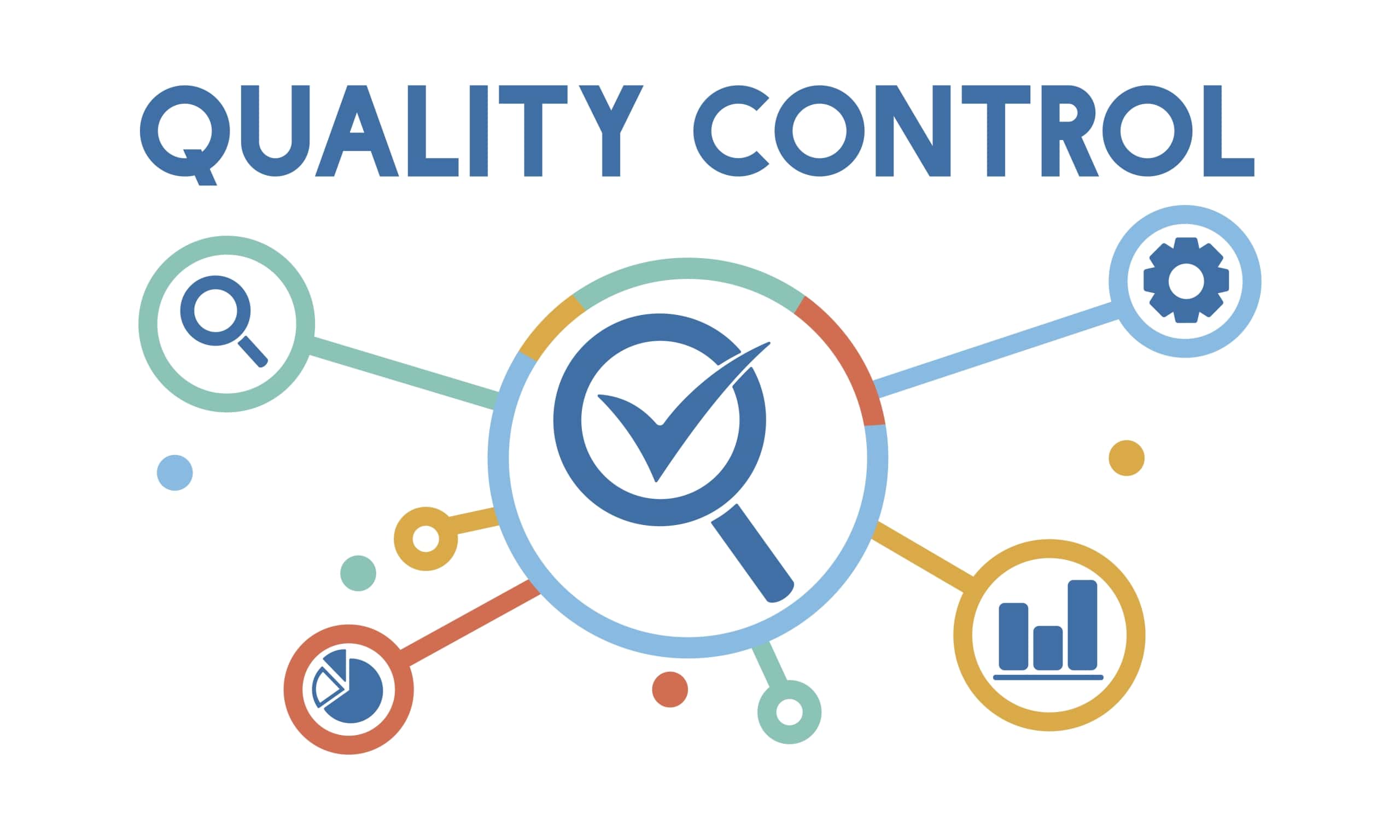Pitfalls #1: Compromised Product Quality
Due to several issues that are inherent in the construction and functionality of cheaper wet wipes machines, selecting cheaper wet wipes machines frequently results in degraded product quality. Specifically, the following factors can have an impact on product quality:
- Varying Product Requirements
Cheaper wet wipes machines could find it difficult to keep up uniform standards while producing. Wet wipes with different sizes, thicknesses, or moisture contents may arise from this, which could negatively impact the user experience and raise complaints from unhappy customers. Significant variances in product quality have the potential to damage a brand’s standing and dependability in the marketplace.
- Inadequate Material Management
Cheaper wet wipes machines may not be able to handle wet wipes raw materials gently or effectively, which could result in problems like the wipes tearing or folding incorrectly. Furthermore, there may be an uneven distribution of liquids (such as moisturizers and cleansers) throughout the wet wipes, which could reduce the product’s efficacy for end consumers.
- Decreased Performance and Durability
When utilized, wet wipes made on cheaper wet wipes machines might not function as intended. For instance, if the packaging is not sufficiently sealed throughout the production process, it may dry up too rapidly or be overly delicate and break when used. This lowers the product’s overall durability and shelf life, which affects customer confidence and encourages repeat purchases.
- Regular Machine Failures
Cheaper wet wipes machines are frequently more prone to malfunctions, which might result in unplanned production stops. Partial product batches may not fulfill quality standards during these disruptions because of hurried or insufficient processing cycles. As the wet wipes machine recalibrates, restarting production may potentially result in waste and problems with quality control.
- Restricted Features for Quality Control
Most high-end wet wipes machines have sophisticated quality control systems installed, which watch over and modify the production process to guarantee a constant level of quality. Conversely, cheaper wet wipes machines might not have these complex mechanisms, which forces wet wipes manufacturers to depend more on labor-intensive and error-prone manual checks.
In conclusion, a wet wipes manufacturer’s reputation and financial stability may suffer greatly from the long-term effects on product quality, even though the immediate savings from investing in cheaper wet wipes machines may be alluring. Investing in better gear can assist steer clear of these traps by guaranteeing the creation of dependable, high-quality goods that satisfy legal and customer requirements.
Pitfalls #2: Increased Downtime and Maintenance Costs
Purchasing cheaper wet wipes machines could appear like a wise financial move at first, but in the long run, it frequently results in more maintenance expenses and downtime.
- Regular Failures
Cheaper wet wipes machines are usually constructed using less robust materials and parts that are more prone to breaking down. Because of this, these wet wipes machines malfunction more frequently and need ongoing maintenance. Every malfunction stops production, resulting in unplanned downtime that throws off supply chain schedules and delays delivery.
- Increased Repair Expenses
Even though cheaper technology may require a smaller initial investment, ongoing repairs may end up costing much more. This results from the requirement to replace worn-out parts regularly or to solve persistent mechanical problems. Furthermore, there may not be as many spare parts available for lower-quality machinery, which raises pricing or necessitates the use of custom solutions, which raises costs even more.
- Rising Labor Expenses
Increased downtime affects labor costs in addition to production. Employees might have to put in more time debugging problems or waiting for machinery repairs rather than completing tasks. This wasteful worker utilization raises operating expenses and lowers total production.
- Decreased Efficiency
A wet wipes machine’s efficiency and production decrease with each minute it is not in use, which affects the facility’s overall productivity. These delays can have significant financial consequences for companies with narrow profit margins or those with constrained production schedules. They may even result in a loss of business if orders are routinely delayed or delivery becomes unreliable.
- Extended Service Response Times
The quality of customer service and technical assistance provided by wet wipes machine manufacturers of cheaper gear may be worse than more reputable wet wipes machine manufacturers. Longer downtime and longer wait times for service professionals may result from this. Furthermore, if the wet wipes machines is purchased from outside the country, there may be further delays and difficulties in obtaining the required maintenance and parts.
- Preventive Maintenance
In order to reduce the likelihood of malfunctions, cheaper wet wipes machines usually need more extensive preventative maintenance. Regular inspections, replacements, and repairs—which can be expensive and time-consuming—are part of this preventive strategy and are essential to keeping the machine in working order.
Essentially, even while less expensive wet wipes equipment could seem cost-effective at first, the associated higher maintenance expenses and downtime can significantly raise the overall cost of ownership. Over time, these unstated costs may increase financial hardship by eating away at any initial savings. Purchasing dependable, high-quality equipment early on can help to reduce these problems and result in more steady and predictable operating costs.
Pitfalls #3: Scalability Challenges
When wet wipes manufacturers choose to use cheaper wet wipes machines, they frequently run into serious scalability issues as their company expands and as consumer needs change. These difficulties may make it more difficult for a business to grow profitably and satisfy growing client demands. The following are the primary scalability problems with adopting less reliable, cheaper wet wipes machines:
- Limited Opportunities for Upgrades
Cheaper wet wipes machines frequently have limited capabilities and lack the modular characteristics that make upgrades or expansions simple. Consequently, these wet wipes machines might not be able to handle the required adjustments as production demands rise or new product criteria need to be met. This may compel wet wipes manufacturers to make earlier investments in completely new wet wipes machines, raising long-term costs and causing operational disruptions.
- Reduced Capacity of Production
Cheaper wet wipes machines usually have a lower output capacity. These wet wipes machines are adequate for low to moderate production numbers in the beginning, but as a company expands, they can easily become production bottlenecks. This restriction may make it difficult for firms to fulfill higher order volumes or successfully grow their product ranges.
- Unwillingness to Consider New Product Types
Wet wipes manufacturers must adjust fast to changing market trends and consumer preferences by changing product types, sizes, and materials. Cheaper wet wipes machines are frequently less flexible to these kinds of adjustments. For example, wet wipes machines might not be able to handle the various kinds of textiles or materials needed for high-end or environmentally friendly items, which restricts the wet wipes manufacturer’s capacity to innovate or diversify its product line.
- Ineffective Production Methods
The inefficiencies of cheaper wet wipes machines become more noticeable as demand rises. These wet wipes machines may require more manual labor, operate at slower rates, and have less precision, all of which contribute to a reduction in the overall efficiency of manufacturing. This inefficiency affects the consistency and quality of the manufactured goods in addition to making it difficult to increase production quantities.
- Elevated Costs of Operations
Increased operating costs might result from using cheaper wet wipes machines and operating at higher quantities. This involves using more energy, hiring more people to do more labor-intensive supervision and manual handling, and spending more on upkeep and repairs. Rising expenses might reduce profit margins and make it more difficult to sustain operations sustainably.
For wet wipes manufacturers looking to expand, the scalability issues with cheaper wet wipes machines present serious hurdles. The restrictions of such technology can impede corporate expansion and flexibility, ultimately impacting a company’s competitive edge and market response, even though the initial cost savings may seem appealing. When starting, wet wipes manufacturers need to invest in scalable, higher-quality wet wipes machines since they will need to grow quickly and adjust to shifting market conditions. This strategic strategy guarantees long-term operational sustainability and profitability in addition to facilitating effective growth.
Pitfalls #4: Environmental Impact and Sustainability
Selecting cheaper wet wipes machines can have detrimental effects on the sustainability of the environment. These effects result from the wet wipes machine’s inherent operational inefficiencies as well as more general implications for waste management and resource usage. Using cheaper wet wipes machines raises the following major environmental and sustainability concerns:
- Increased Energy Use
Often, cheaper wet wipes machines do not have the newest energy-efficient designs and technologies. Compared to more recent or high-end wet wipes machines that have energy-saving features, this leads to a higher energy consumption per unit of production. Excessive energy use undermines attempts to implement sustainable industrial practices by raising operating costs and adding to carbon footprints.
- A Rise in the Production of Waste
Cheaper wet wipes machiens with less accuracy and consistency may produce more defective products that need to be thrown away. These wet wipes machines might also be underoptimized in terms of material utilization, which would increase waste and offcuts during production. The handling and elimination of this trash not only results in extra expenses but also affects the sustainability of the environment because it requires more landfill space and may cause contamination.
- Managing and Recycling Byproducts Is Hard
Lower-tech manufacturing methods might not be able to support material recycling or ecologically responsible byproduct management. Wet wipes, for example, may not have the right amount of moisture or chemicals, which might make recycling more difficult or make waste goods more dangerous. This makes it more difficult for the company to apply a circular economy model, which maximizes material reuse.
- Inadequate Adjustment to Environmental Innovations
Manufacturing equipment that can adjust to new materials and procedures that reduce environmental effect is necessary as consumer demand evolves towards more environmentally friendly and sustainable products. It’s possible that cheaper wet wipes machines won’t work with compostable or biodegradable materials, or it won’t encourage the effective use of safer, natural chemicals. This limits a wet wipes manufacturer’s potential to develop and satisfy consumer needs for environmentally friendly products.
- Risks Associated with Regulatory Compliance
Governments around the world are pressuring industries to adopt more sustainable practices, which results in harsher environmental restrictions. If using less expensive, inefficient machinery results in waste, energy consumption, or emissions above permitted limits, there may be compliance issues. Further highlighting the necessity of environmentally friendly machinery is the possibility of fines, penalties, and harm to one’s reputation for non-compliance.
For wet wipes manufacturers hoping to continue running ethical and competitive businesses, the environmental effects and sustainability issues of using cheaper wet wipes machines are major problems. Purchasing better, more energy-efficient machinery contributes to a reduction in adverse environmental effects and is consistent with worldwide sustainability trends, providing long-term advantages beyond short-term cost reductions. Wet wipes manufacturers who emphasize environmentally friendly procedures and tools are better positioned to comply with legal requirements, meet consumer demands for eco-friendly products, and make a beneficial impact on environmental preservation.
Pitfalls #5: Compliance and Safety Risks
Selecting cheaper wet wipes machines might result in serious safety and compliance issues that affect not only the production process but also the legal status and overall reputation of the wet wipes manufacturers.
- Disregard for Industry Standards
Cheaper wet wipes machines frequently lack the advanced safety features and engineering required to comply with industry norms and laws. This can result in production procedures that don’t follow the most recent safety or quality standards, which could put the wet wipes manufacturers in danger of failing audits and inspections. Repercussions for noncompliance could include penalties, product recalls, or even legal action, depending on how serious the error was.
- A Higher Chance of Accidents at Work
Every manufacturing environment, including the production of wet wipes, must prioritize safety. Cheaper wet wipes machines may lack safety guards, emergency stop buttons, and user-friendly interfaces that make a machine safer. This may heighten the likelihood of workplace accidents on the production line, impacting workers’ health and insurance costs, legal ramifications, and reputational harm.
- Inadequate Quality Assurance
Meeting quality standards that guarantee the dependability and efficacy of the finished product is just as important as following safety requirements when it comes to compliance. Wet wipes produced with cheaper wet wipes machines could have uneven quality and not meet consumer product regulations. Such problems with quality can result in unhappy customers, returns, and complaints from them; if the products are found to be unfit for use, these concerns can escalate to regulatory attention.
- Problems with Environmental Compliance
Wet wipes manufacturers must ensure their processes and equipment have the least negative ecological impact possible as environmental restrictions get tougher. Cheaper wet wipes machines may not be effective in managing waste or consuming energy, which could violate environmental rules. In addition to facing consequences, this kind of non-compliance can make it more difficult for a business to grow or continue operating, especially in areas where environmental regulations are stringent.
- The Challenge of Obtaining Certifications
Certifications from the International Organization for Standardization (ISO) are highly valued in many industries as indicators of dependability and quality. A reliable and safe operating system under demanding conditions is typically necessary for obtaining and preserving these certifications. When a wet wipes manufacturer uses subpar equipment, the certification procedure becomes more difficult, and they may not be able to reach customers or markets where these certifications are necessary.
The hazards to safety and compliance that come with employing cheaper wet wipes machines can have a significant impact on a company. These hazards affect not just worker safety and operational efficiency, but also market reputation and regulatory status. Purchasing better wet wipes machines that satisfy or beyond legal requirements is essential for producers in the wet wipes sector. By guaranteeing that the wet wipes manufacturers can reliably and safely meet consumer and regulatory requirements, this strategy not only reduces risks but also boosts the business’s competitiveness.






